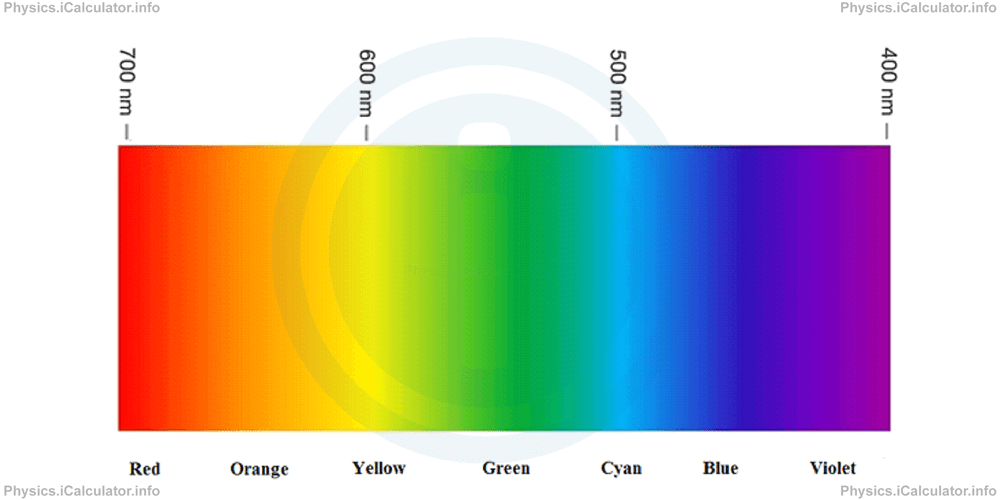Menu
Physics Lesson 12.5.1 - Recap of Visible Light and Its Colours
Please provide a rating, it takes seconds and helps us to keep this resource free for all to use
Welcome to our Physics lesson on Recap of Visible Light and Its Colours, this is the first lesson of our suite of physics lessons covering the topic of Dispersion of Light, you can find links to the other lessons within this tutorial and access additional physics learning resources below this lesson.
Recap of Visible Light and Its Colours
In the Physics tutorial on the Features of Light, it was explained that visible light is a small part of EM spectrum ranging in wavelength from 400 nm to 700 nm or from 0.42 THz to 0.75 THz in frequencies (T stands for Tera = 1012). The weakest part of visible light is the red light while the violet light is the most powerful. This means energy of light waves is proportional to their frequency and inversely proportional to the wavelength.
The order of colours from the weakest to the strongest is shown below.
Red → Orange → Yellow → Green → Cyan → Blue → Violet
Or

There are no fixed border between colours. However, a rough estimation gives the following values for the wavelengths of the above colours of light.
Red → 700 nm - 635 nm
Orange → 635 nm - 590 nm
Yellow → 590 nm - 560 nm
Green → 560 nm - 520 nm
Cyan → 520 nm - 490 nm
Blue → 490 nm - 450 nm
Violet → 450 nm - 400 nm
You have reached the end of Physics lesson 12.5.1 Recap of Visible Light and Its Colours. There are 4 lessons in this physics tutorial covering Dispersion of Light, you can access all the lessons from this tutorial below.
More Dispersion of Light Lessons and Learning Resources
Whats next?
Enjoy the "Recap of Visible Light and Its Colours" physics lesson? People who liked the "Dispersion of Light lesson found the following resources useful:
- Recap Feedback. Helps other - Leave a rating for this recap (see below)
- Optics Physics tutorial: Dispersion of Light. Read the Dispersion of Light physics tutorial and build your physics knowledge of Optics
- Optics Revision Notes: Dispersion of Light. Print the notes so you can revise the key points covered in the physics tutorial for Dispersion of Light
- Optics Practice Questions: Dispersion of Light. Test and improve your knowledge of Dispersion of Light with example questins and answers
- Check your calculations for Optics questions with our excellent Optics calculators which contain full equations and calculations clearly displayed line by line. See the Optics Calculators by iCalculator™ below.
- Continuing learning optics - read our next physics tutorial: Polarization of Light
Help others Learning Physics just like you
Please provide a rating, it takes seconds and helps us to keep this resource free for all to use
We hope you found this Physics lesson "Dispersion of Light" useful. If you did it would be great if you could spare the time to rate this physics lesson (simply click on the number of stars that match your assessment of this physics learning aide) and/or share on social media, this helps us identify popular tutorials and calculators and expand our free learning resources to support our users around the world have free access to expand their knowledge of physics and other disciplines.